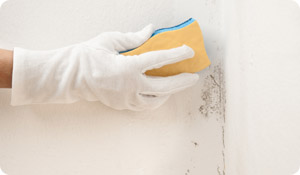
Do you or a family member have asthma? If so, you should know that staying safe from triggers starts inside the home: Dampness and mold growth inside the home can make your asthma flare.
And now, researchers have discovered that treatments to improve energy efficiency in the home are a culprit, according to a recent article in the Journal of Allergy and Clinical Immunology. "Homes that have been draft-proofed to prevent heat loss, combined with occupants who fail to provide adequate heating and ventilation, may lead to increased dampness and mold growth," says Richard Sharpe, PhD, a researcher with the European Centre for Environment and Human Health at the University of Exeter Medical School, in Truro, England.
That’s because practices like adding insulation in the walls, double glazing the windows, and capping chimneys can “reduce ventilation rates and prevent the natural control of moisture,” according to Sharpe and his co-authors, who looked at more than a dozen studies on the relationship between housing conditions and health.
Sharpe advises that people take steps to maintain ideal air conditions, keep out dampness, and address any mold-related issues promptly. And protecting your home from mold isn’t just for people already dealing with asthma, according to Sharpe’s research—some types of mold can even trigger new cases of asthma.
How to Reduce Mold
When it comes to preventing dampness and mold and removing mold that already exists, the U.S. Environmental Protection Agency (EPA) offers the following key steps to help prevent or reducing asthma symptoms.
- Identify and repair any sources of dampness in your home. These include leaking faucets or pipes, cracks around your shower and tub, or cracks or openings in the structure itself that could allow water to creep in.
- Dry any spills or wet spots right away. Mold can grow within a day or two, so you never want to wait.
- Scrub any patches of mold on walls, counters, and floors with detergent and water. Then be sure to dry the area completely.
- Throw away any soft surfaces (like carpets) with visible mold that you are unable to remove completely.
- Make sure your bathrooms and kitchen are well ventilated to allow the steam from your shower, dishwasher, and stove to be released outdoors. This will help keep humidity levels low and prevent mold growth. You can also open a window or run a fan to prevent excessive moisture from building up.
- Run a de-humidifier or air conditioner to keep the air at optimal moisture levels. The EPA says the ideal target is between 30 and 50 percent. You can buy a humidity meter at your local hardware store to check your levels.
- Clean your gutters to ensure they will direct rain water away from your home.
- If you notice condensation on your windows, add caulk around the frame. Or invest in storm windows to add extra insulation.
Seeking Help
When mold in your home is too big a problem for you to handle on your own, you may want to call in a company that specializes in mold remediation and restoration or air quality control.
Richard Sharpe, PhD, European Centre for Environment and Human Health, University of Exeter Medical School, reviewed this article.
Sources
Sharpe, Richard. European Centre for Environment and Human Health, University of Exeter Medical School. Email interview Nov. 10, 2014. http://www.ecehh.org/people/richard-sharpe/
Sharpe, Richard A., et al. "Indoor Fungal Diversity and Asthma: A Meta-Analysis and Systematic Review of Risk Factors." Journal of Allergy and Clinical Immunology Aug. 2014; Accessed online Nov. 17, 2014.
"A Brief Guide to Mold, Moisture, and Your Home." US Environmental Protection Agency (EPA). Accessed online Nov. 16, 2014.





